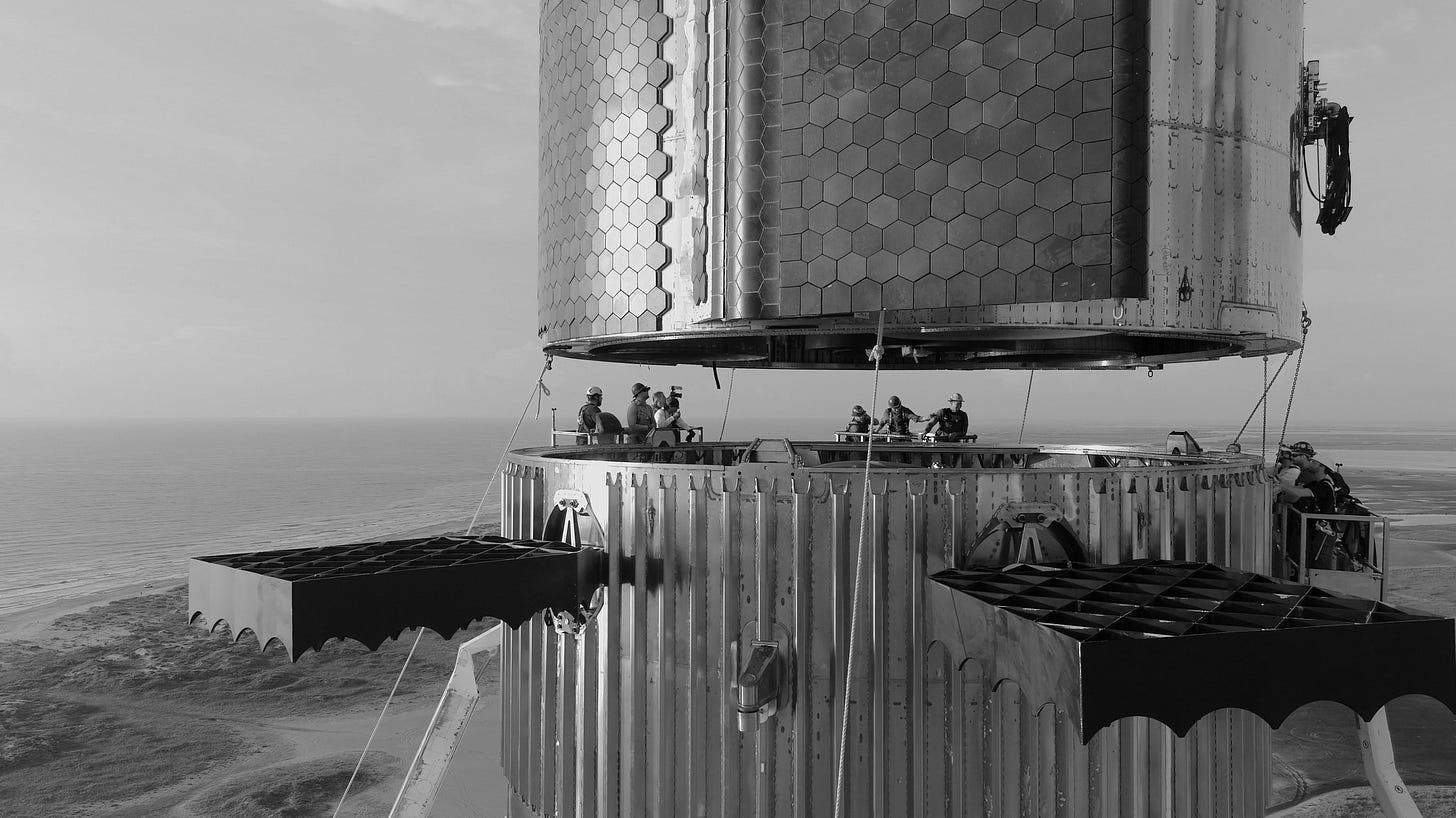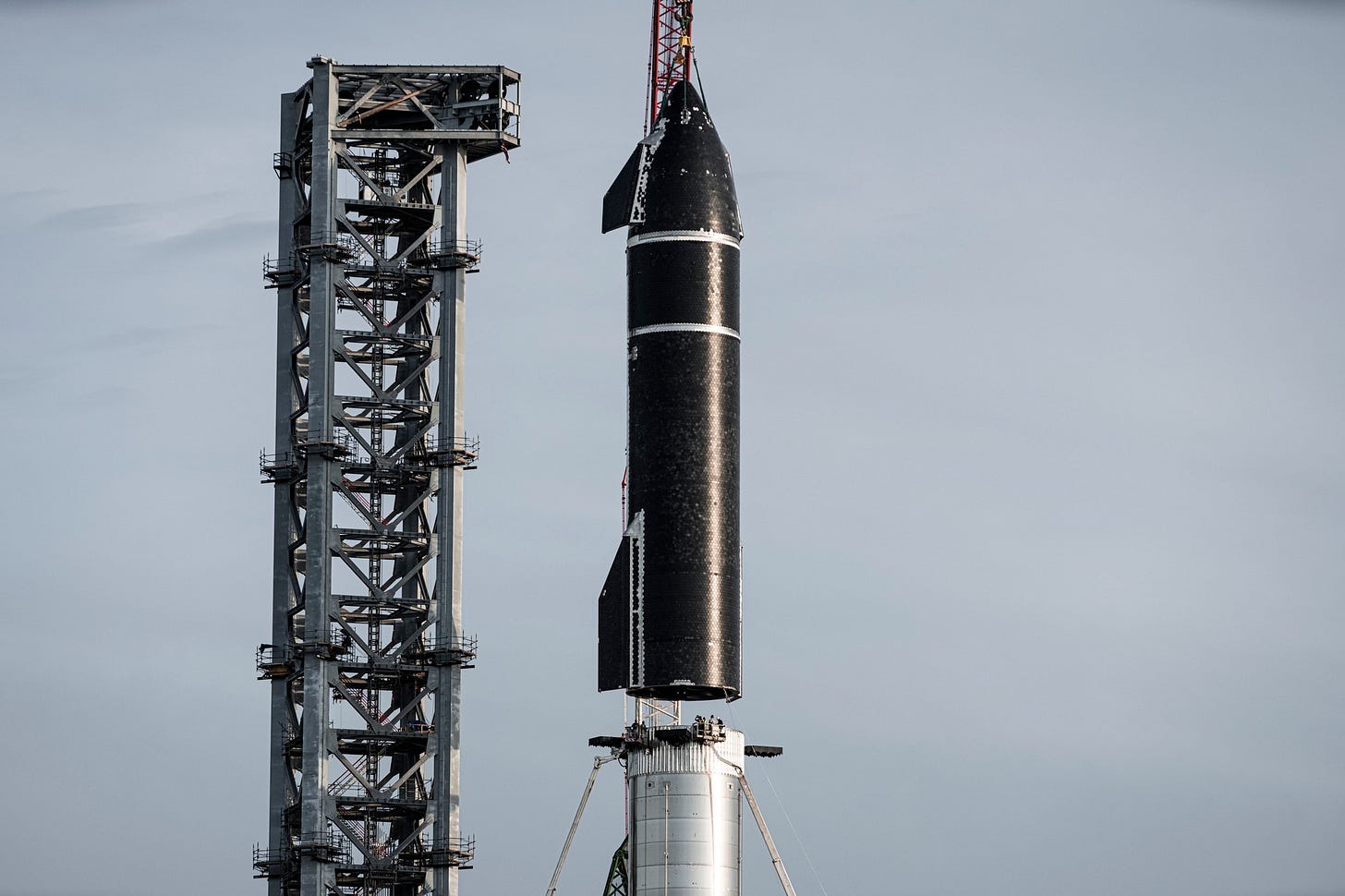
Thanks for finding Full Throttle. Please share and subscribe here. Full Throttle posts twice a week. Follow me on Twitter, Instagram, and Linkedin.
SpaceX has moved a step closer to launching its Starship from Boca Chica, Texas. The Federal Aviation Administration said this week that SpaceX must meet 75 mitigation demands in order to get approval to launch from its coastal Starbase. It appears the company will be able to meet the FAA request.
That wasn’t the most interesting news about this huge, reusable spacecraft under development by the SpaceX team. It's the production plan that struck me.
SpaceX high altitude test of its Starship prototype on May 5, 2021. (Credit: SpaceX)
While Elon Musk often makes news about what he plans to do with his space company, it is the President of SpaceX who tries to make it happen. Gywnne Shotwell has been with the company for 20 years and its President since late 2008. She confidently says Starship will reach orbit. “We know how to do that, “ she told an audience at the Stanford Graduate School of Business on June 3rd.
PREPARING FOR ORBIT
Starship is huge. There is a booster that pushes the actual ship through the atmosphere. That booster is designed to return to the launchpad and land. The Starship, the second-stage, is supposed to carry cargo and humans to the moon and possibly to Mars. It too is reusable and is expected to land on celestial bodies.

Starship returning to pad during its high altitude test. (Credit: SpaceX)
NASA has boosted the hopes for Starship. The space agency awarded a nearly $3 billion dollar contract to SpaceX to build a Starship to land astronauts back on the moon. So, you, the American taxpayer are helping fund the development of this spacecraft.
PRODUCE LIKE A CAR
While Shotwell is confident the company will get Starship to orbit, the real challenge, she says, is producing the spacecraft in large numbers. “We want to produce a rocket a day, or come much closer to automotive,” she told the Stanford audience, adding “You’re gonna need a bunch of them.”
SpaceX President Gwynne Shotwell on the level of Starship production that will be needed for a mission to Mars. (Credit: Stanford Graduate School of Business)
Shotwell says a flotilla of Starships will be needed to make the journey to Mars, carrying not just astronauts, but all they will need to continue building out a Mars base (some Starships and robots are expected to precede the astronauts’ arrival to start building a base).
“We need to have a production system to build rockets, much like a production system to build cars. Maybe not quite so many. I don’t think we need a million a year. But, we need more than a couple hundred,” Shotwell said.

Starship being stacked onto a booster at SpaceX Starbase in Texas. (Credit: SpaceX)
The reference to cars suggests that the systems and manufacturing procedures Musk painfully learned at Tesla will be employed at SpaceX for Starship.
PROPULSION SYSTEMS
It may be early to think about this, but Shotwell was asked what comes after Mars? “We are not working on a ship that yet has the propulsion system to take us to other star systems,” she says. The most likely propulsion system for that (and some say to get to Mars, too) is nuclear. As for reaching another star system, Shotwell says, “It won’t happen in my lifetime.”
Shotwell explaining a new propulsion system will be needed for the SpaceX Starship to venture beyond the solar system. (Credit: Stanford Graduate School of Business)
MOON OR MARS?
So where would the President of SpaceX like to go if she had her own Starship? “The moon,” she says. “ I don’t like to camp,” Shotwell quipped. Going to Mars is a 6 month journey and two years on the planet before it aligns with earth for a return trip.
Those going to Mars she says will be, “camping in the most extreme ways humans have ever camped. Whereas camping on the moon, if you hate it, just come home.”
Shotwell on why she has no plans to travel to Mars. (Credit: Stanford Graduate School of Business)
(Cover photo credit: SpaceX)




